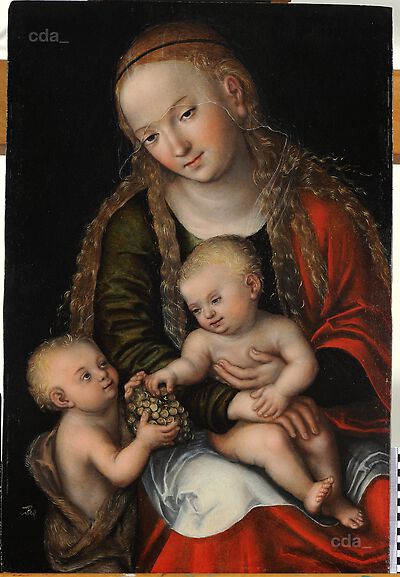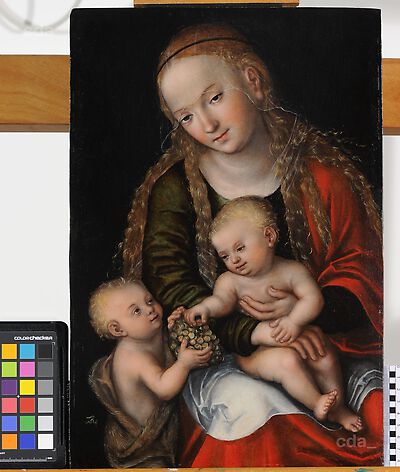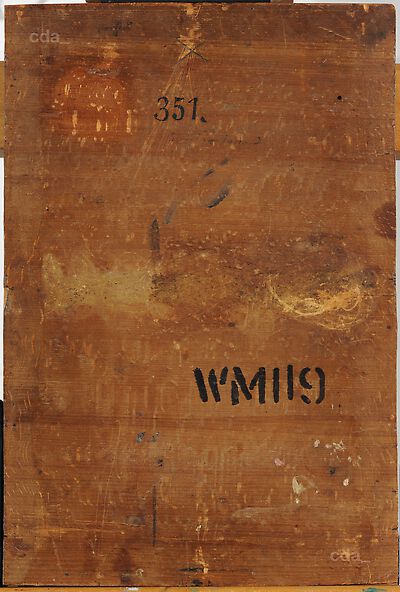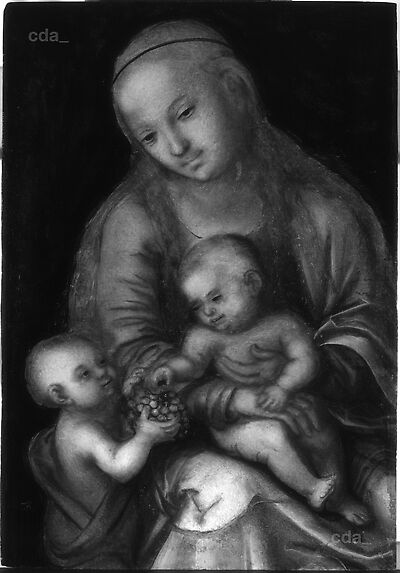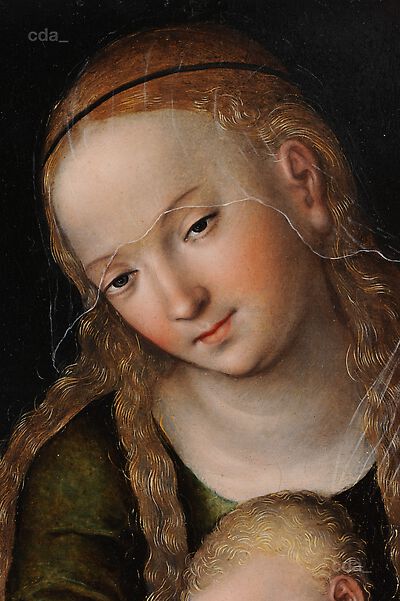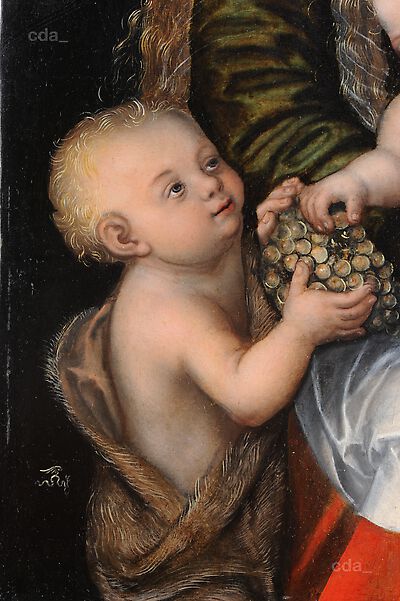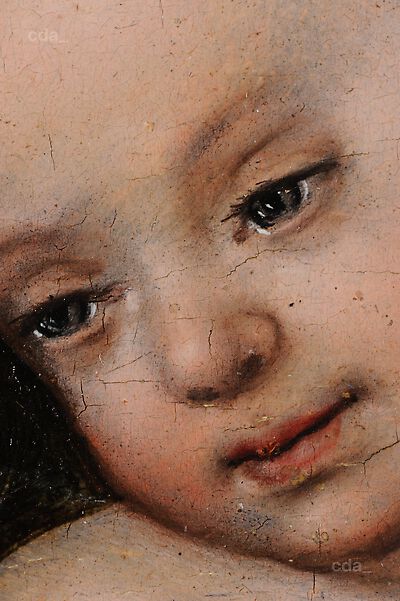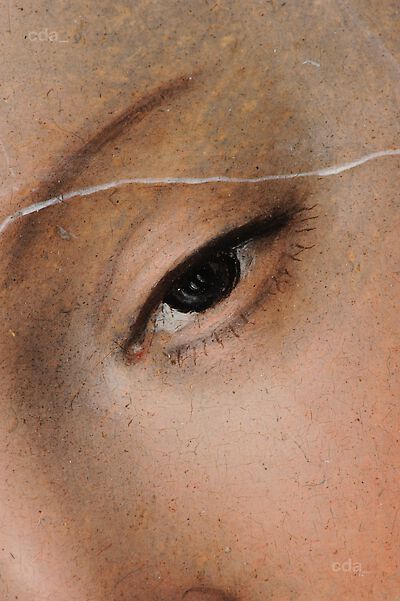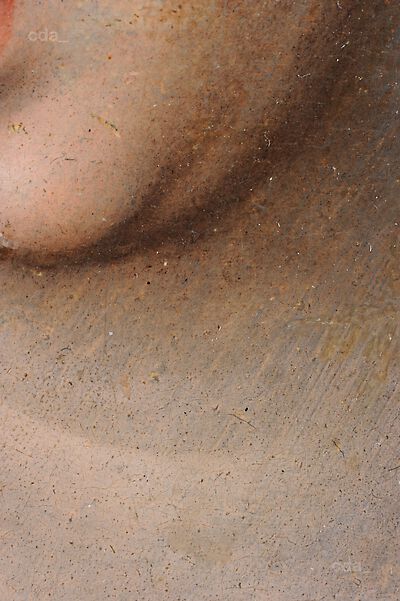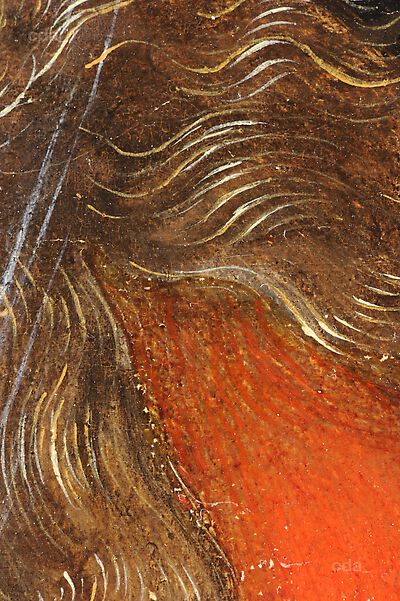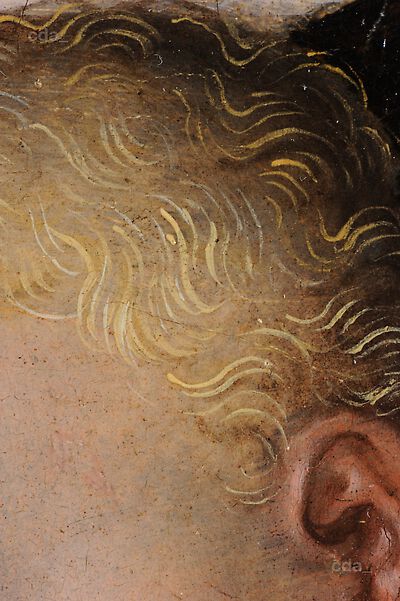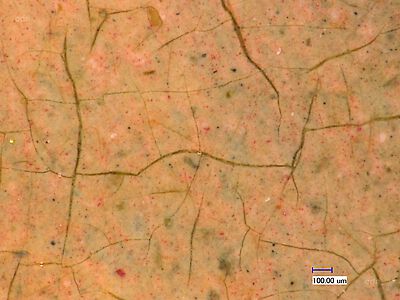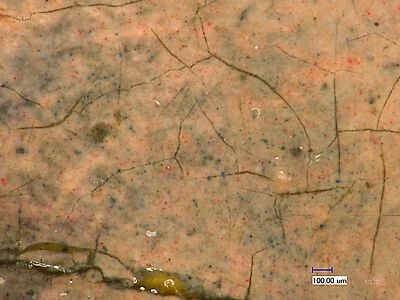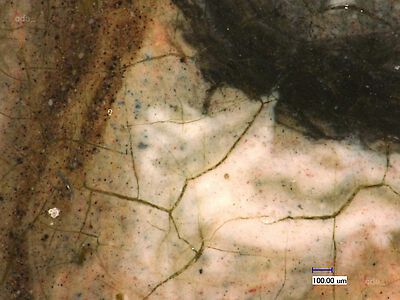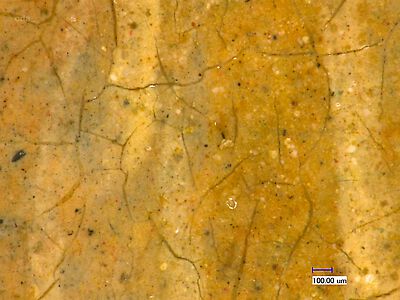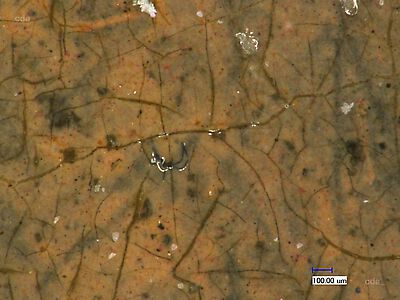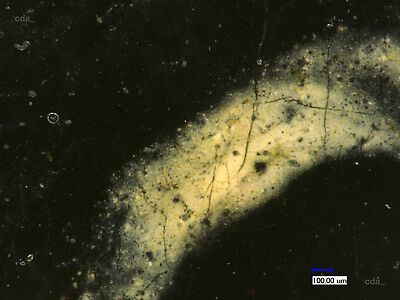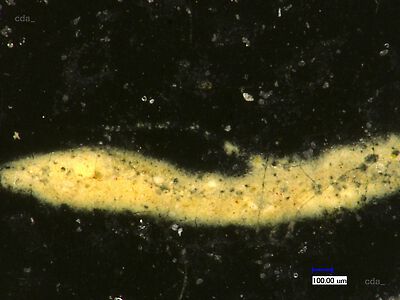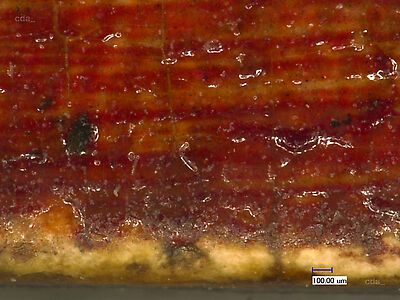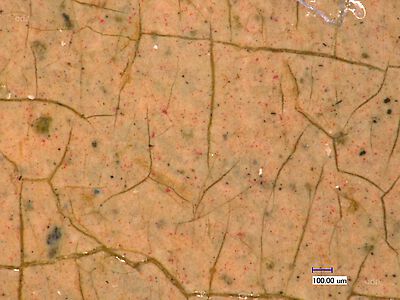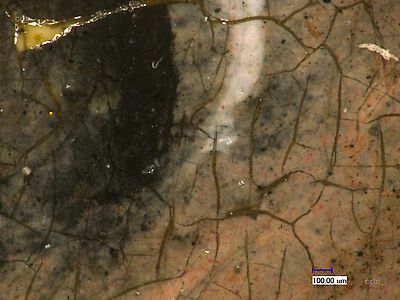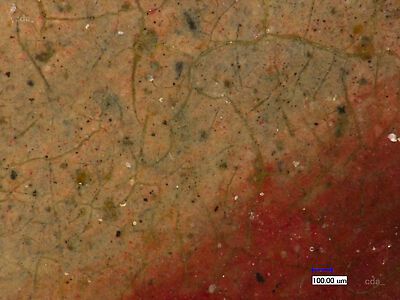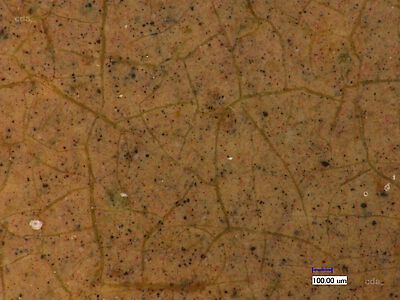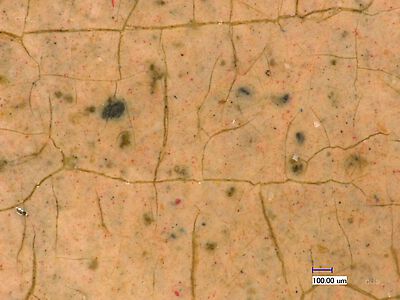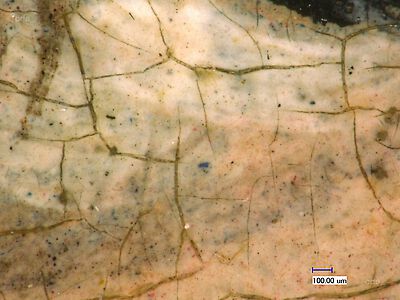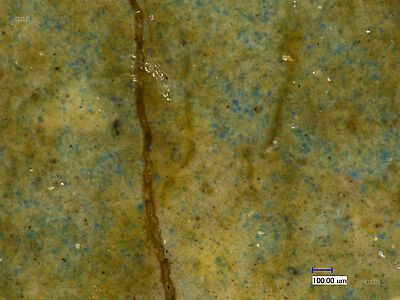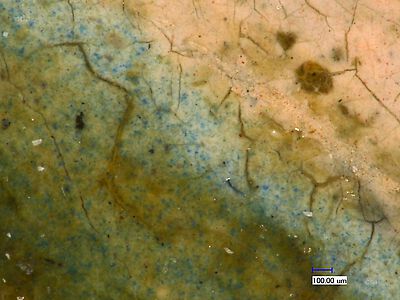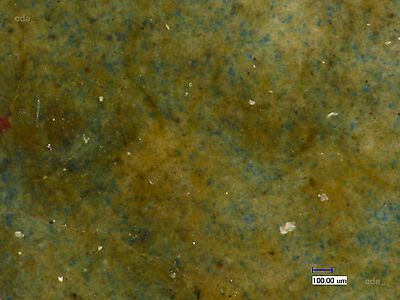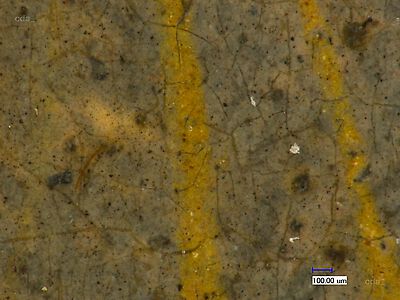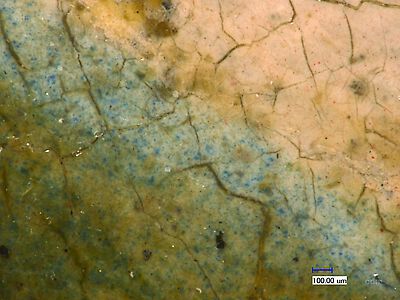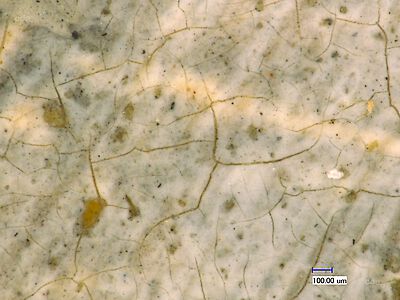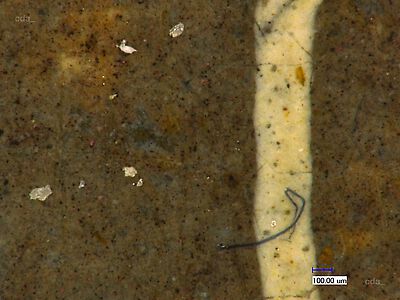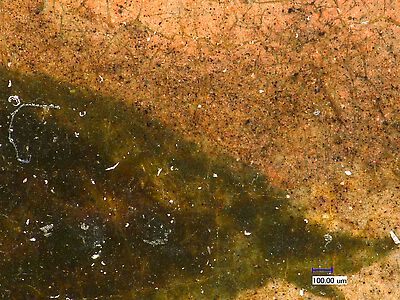Support
The wooden panel (38.8 x 26.2 x 0.5 cm) consists of two horizontally aligned and butt-joined planks. The join is covered both on the recto and on the verso with an fibre application (tow) the left and the right edges of the panel are bevelled on the reverse. The bare wood was left visible on the reverse. [...] The panel may have been trimmed slightly along the bottom edge.
[Heydenreich, examination report 2011, 2]
Ground and Imprimatura
The panel has a white ground application, which appears to be a chalk ground. The ground extends to the edge of the panel suggesting that it was not fixed in a frame during this process. The edges were later reworked slightly and may have been trimmed slightly.
[Heydenreich, examination report 2011, 2]
Underdrawing
Infrared reflectography showed only a few lines of underdrawing. The black lines executed with a brush fix the contours and essential details (particularly visible in the Virgin's face). The visibility of the underdrawing is impaired by the grisaille-like underpainting [...] the few lines visible in the infrared reflectogram of the present painting do not permit evaluation.
[Heydenreich, examination report 2011, 2-3]
Paint Layers and Gilding
Undermodelling
Examination under the stereomicroscope, the x-radiograph and the infrared reflectogram provided evidence, that the entire composition was initially laid in employing different grey tones before it was completed in colour. Single shapes, volume and lighting were specified in various grey nuances. In general the coloured paint was worked up with a stippling technique. Subsequently the transitions of the grisaille-like undermodelling were blurred with a soft hair brush, resulting in a partially streaky structure, for example the torso of the infant Christ and the Virgin's neck. In the Virgin's face the lighting is relatively schematically resolved due to a greater application of lead white. Grisaille-like undermodelling of single pictorial elements was employed over many decades in the Cranach workshop. Modulation of the entire composition in grey tones prior to a final coloured application has to date been identified above all on large format works from the 1540s. In this way a particularly soft tonal gradation could be prepared in the faces, robes or in the sky without employing coloured pigments. At the same time this method of building up the image allowed a intermediate assessment of the intended pictorial effect, which was of particular importance for workshop productions where tasks were divided.
Flesh paint and hair
A further modulation of the facial forms with a lighter admixture of lead white and vermilion pigments followed the grisaille undermodelling. Shadows were created with semi-transparent brown glazes taking the grey undermodelling into account and the light accents were applied in lighter flesh paint. Whereas more red pigments were added to the flesh paint in the cheeks, a blue pigment (azurite?) could be identified in the cool half-shadows. The x-radiograph reflects the confident and systematic modulation of the facial forms. The image was worked up with both stipples and strokes. Considering the scale details like eyes and mouths are confidently executed. The hair was laid in with varying intensities of brown and subsequently nuanced with fine strokes of different colours. The single strands appear to have been executed with different degrees of confidence and precision. While the sequence of painting shows that the hair was executed before the Virgin's white veil, single elegantly formed hair strands were applied over the white paint.
[...]
Draperies
The Virgin's dress which appears green today was originally blue. Under the stereomicroscope blue azurite pigments were clearly visible beneath a brownish coating responsible for the discoloured appearance. Here the paint was generally worked up employing a stippling technique. The red coat was executed in an opaque vermilion admixture, applied with stipples, strokes and in part dots over the grey undermodelling and subsequently routinely finished with red transparent glazes. The white cloth is painted predominantly wet-in-wet with white and black pigments. The folds on the right edge of the painting are less convincing in their execution. The infant John's fur also reflects little interest in details. The x-radiograph reveals that the whole painting process was precisely planned. All the individual shapes were clearly defined. Significant alterations are not apparent.
[Heydenreich, examination report 2011, 3-4]
Framing
The original frame has not been retained.
[Heydenreich, examination report 2011, 2]
- examined by Gunnar Heydenreich
